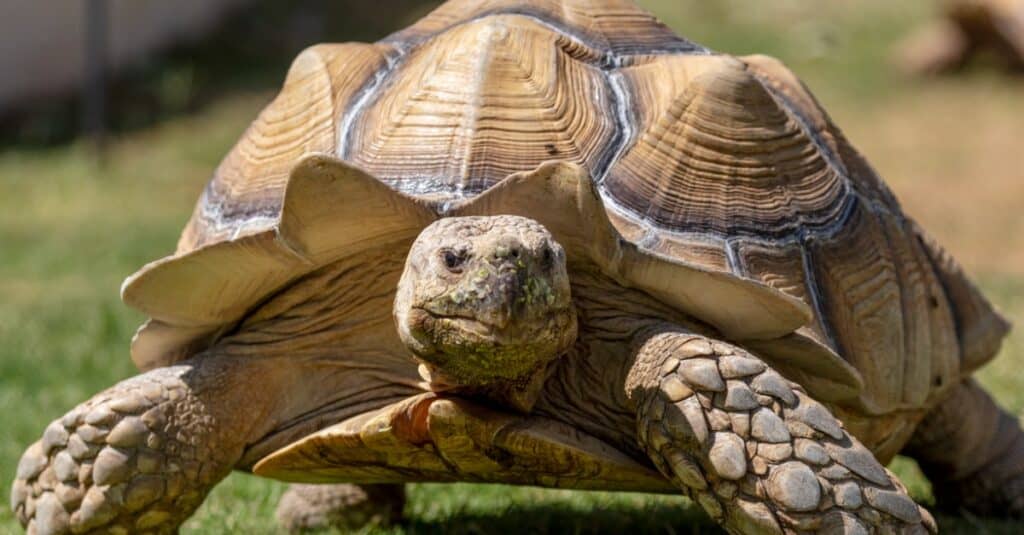
Sulcata tortoises hiss when startled. This is just one of the incredible facts about sulfate tortoises!
©iStock.com/GoDogPhoto
Snakes aren’t the only animals that hiss; certain tortoises do too!
If something startles or provokes a sulcata tortoise, it’ll start hissing. The hiss can be loud and abrupt or as quiet as a snake’s. It’s common for the tortoise to make a hissing sound as they retract their body into the shell.
The sulcata tortoise is officially called the African Spurred Tortoise. As the name suggests, sulcatas are native to the Sahara desert. They’re incredible creatures, and we’d love to tell you about them!
Read on to learn 10 incredible facts about the sulcata tortoise.
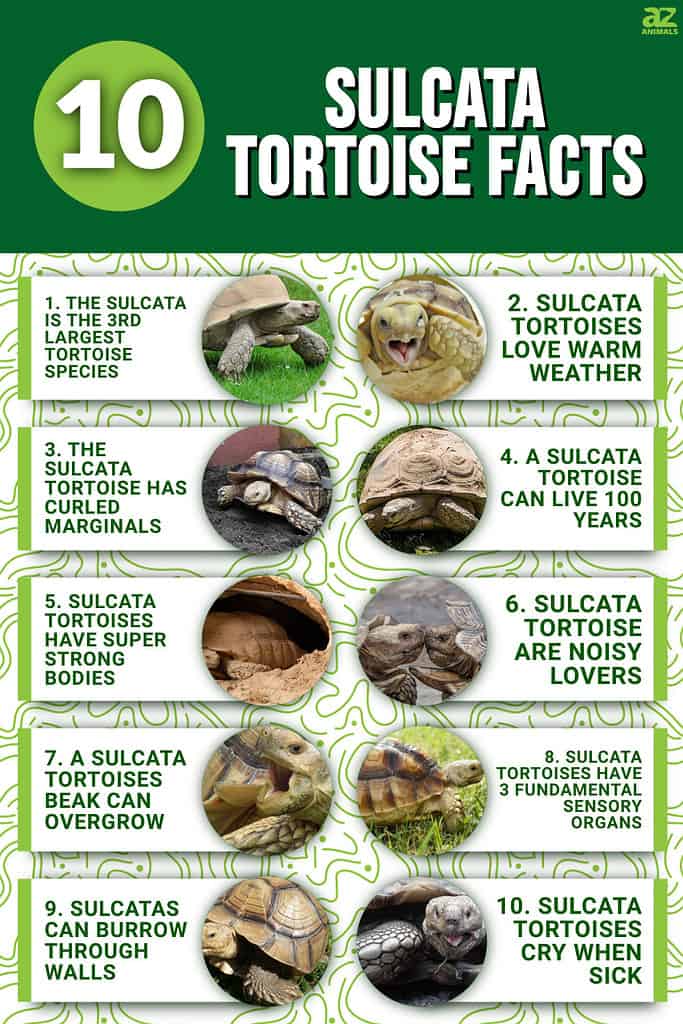
1. The Sulcata Is the 3rd Largest Tortoise Species
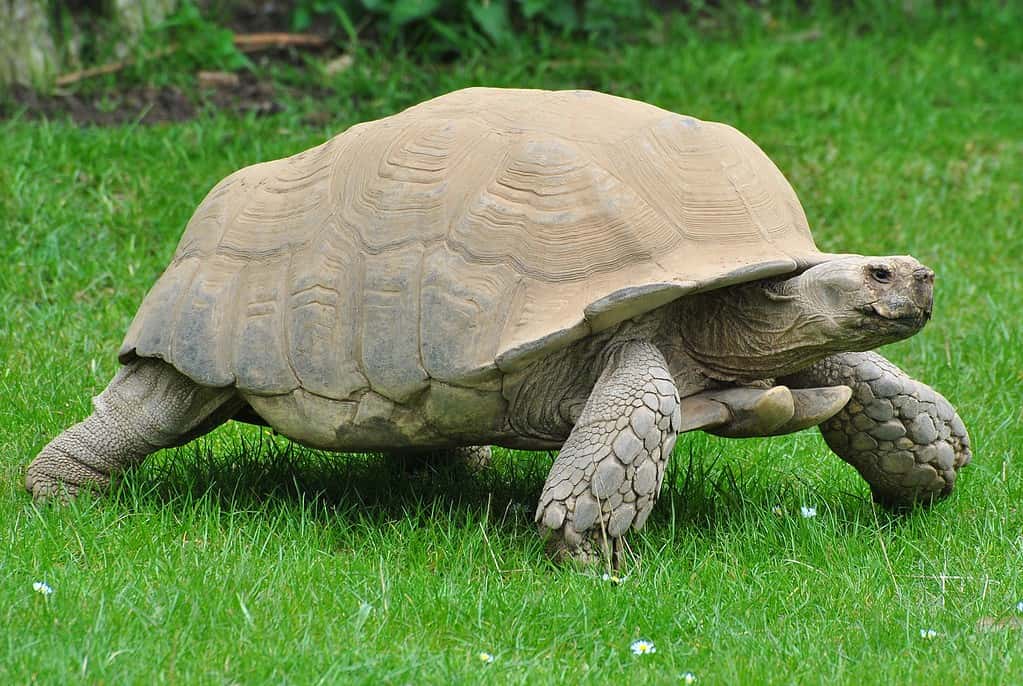
In captivity, the tortoise can easily weigh over 120 lb and have a body that extends over 30 inches in length.
©John5199, CC BY 2.0, via Wikimedia Commons – License
The sulcata tortoise is the third biggest tortoise species. It’s also the largest non-island or mainland species of tortoise. In captivity, the tortoise can easily weigh over 120 lb and have a body that extends over 30 inches in length. That means these tortoises weigh more than some people do!
2. Sulcata Tortoises Love Warm Weather
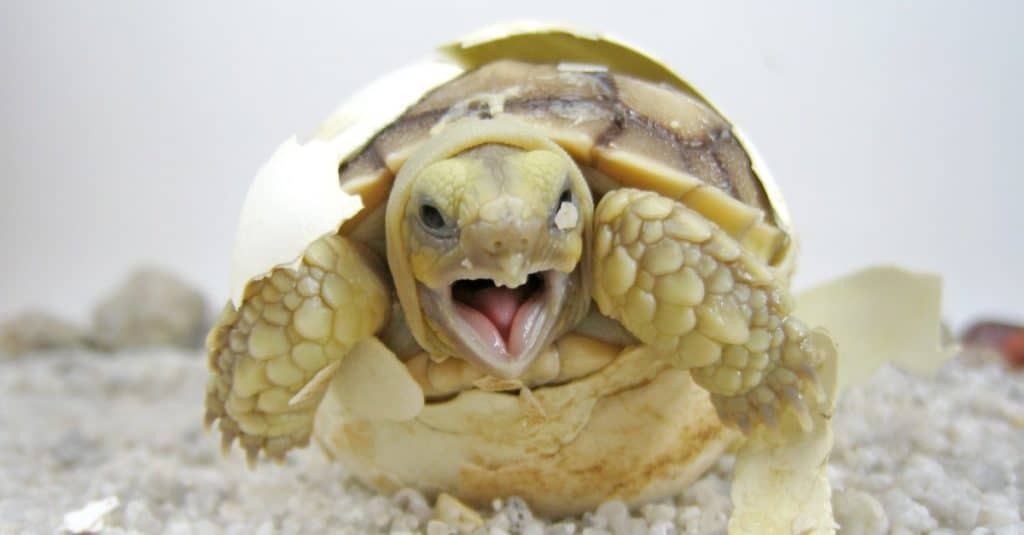
Sulcata tortoises (African spurred tortoises) do best in states with sunny climates like the arid grasslands found in Arizona and California.
©seasoning_17/Shutterstock.com
Since the sulcata tortoise comes from the dry African Savannas, they do best in states with similarly sunny climates. These giant tortoises love the arid grasslands found in Arizona and California.
Even though Sulcata tortoises don’t thrive well in cold climates, they can handle low temperatures. Surprisingly, they can tolerate temperatures as low as 45 degrees Fahrenheit. However, when nighttime temperatures drop below 50°F, pet owners should provide their tortoise with a heated box.
3. The Sulcata Tortoise Has Curled Marginals
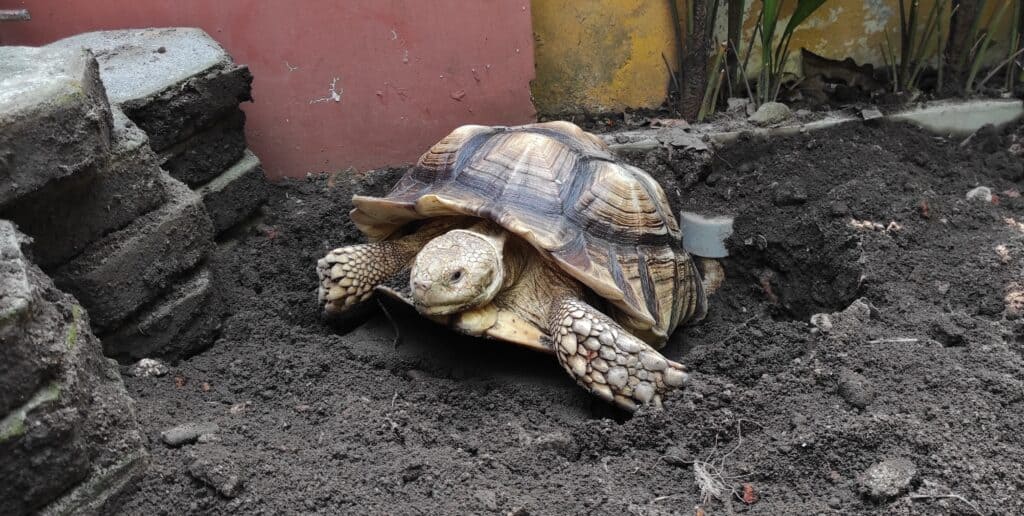
Sulcata tortoises have a unique flaring with their marginal scutes.
©Osa Sumanohara/Shutterstock.com
One of the Sulcata tortoises distinguishing features is their curled marginals. The marginals are the portion of the tortoiseshell with openings. You can find marginal scoots by the tortoise’s head and tail.
Sulcata tortoises have a unique flaring with their marginal scutes. The flared marginals are easy to spot in large males. Another distinguishing characteristic is the presence of 2-3 long and pointed conical spurs on each thigh.
4. A Sulcata Tortoise Can Live 100 Years
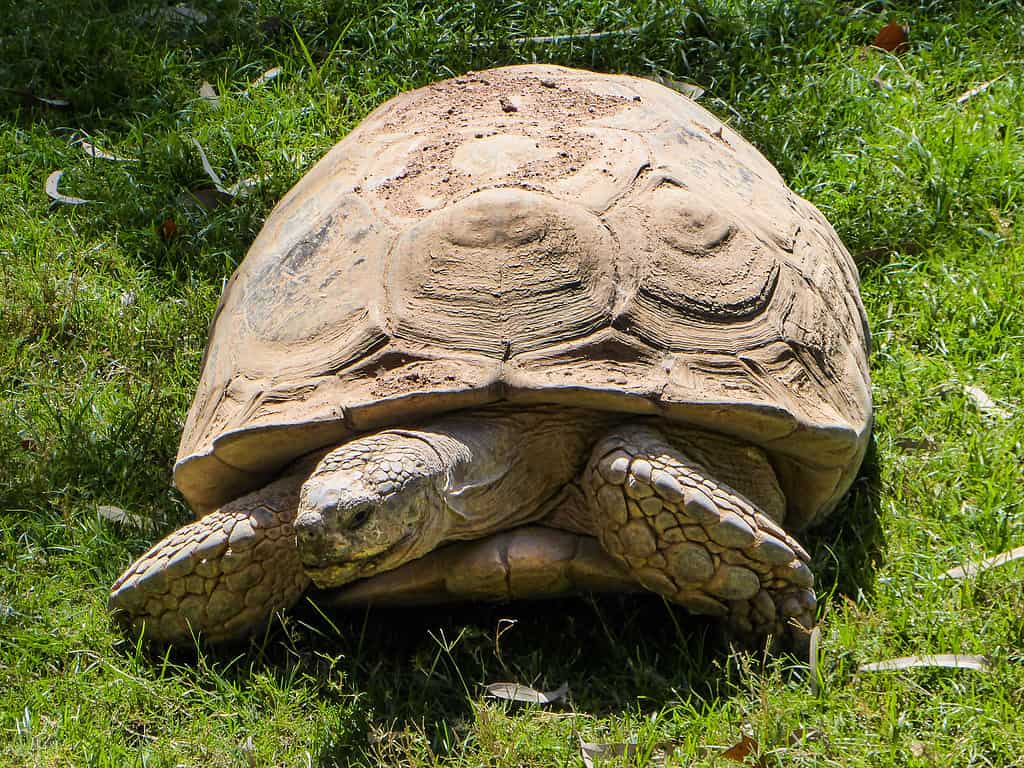
People mistakenly believed that you could tell a Sulcata tortoise’s age by counting the grooves on its shells.
©Wirestock/ via Getty Images
A sulcata tortoise can live up to 100 years or longer! Tortoises are one of the longest-living animals.
Tortoises that live in the wild tend to have shorter lifespans. Different threats can shorten their lifespan. Tortoise threats include predators, diseases, and adverse weather.
How do you know how old a tortoise is? People mistakenly believed that you could tell a Sulcata tortoise’s age by counting the grooves on its shells. Researchers used to think that each groove represented a completed growth period.
However, further research has uncovered that determining the exact age is much more challenging. The best way to know their precise age is through record-keeping.
5. Sulcata Tortoises Have Super Strong Bodies
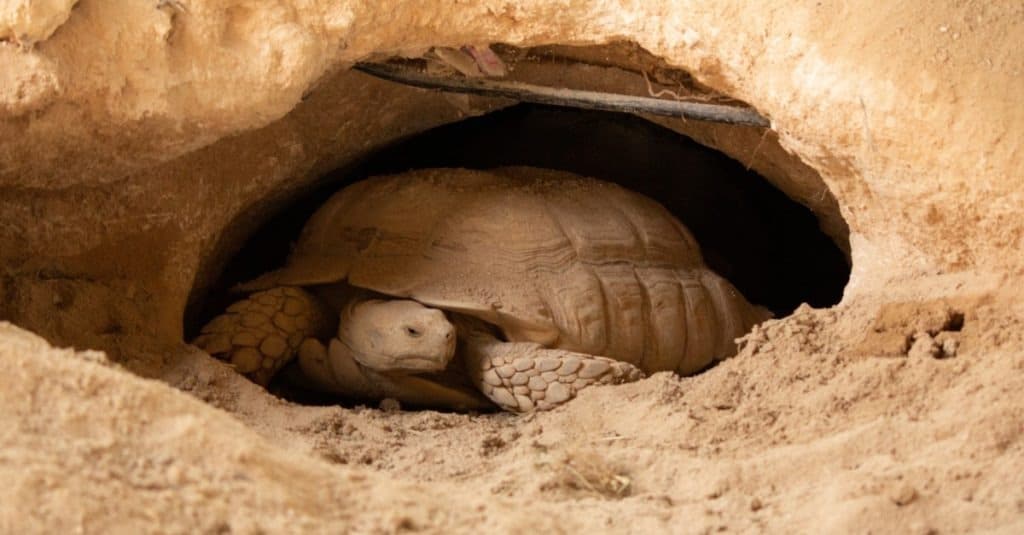
Sulcata tortoises have strong muscular systems.
©SLSK Photography/Shutterstock.com
Next on our list of incredible Sulcata tortoise facts, let’s talk about strength! A Sulcata tortoise’s muscular system is much stronger than other land vertebrates. If they didn’t have strong muscles, they wouldn’t be able to move their head in and out of their shell.
Tortoises don’t have a lot of cartilage. Instead, their body is primarily made of bones.
The exoskeleton consists of the skull, ribs, and vertebrate. The skeleton of the head is primitive and doesn’t have a true temporal opening.
6. Sulcata Tortoise Are Noisy Lovers
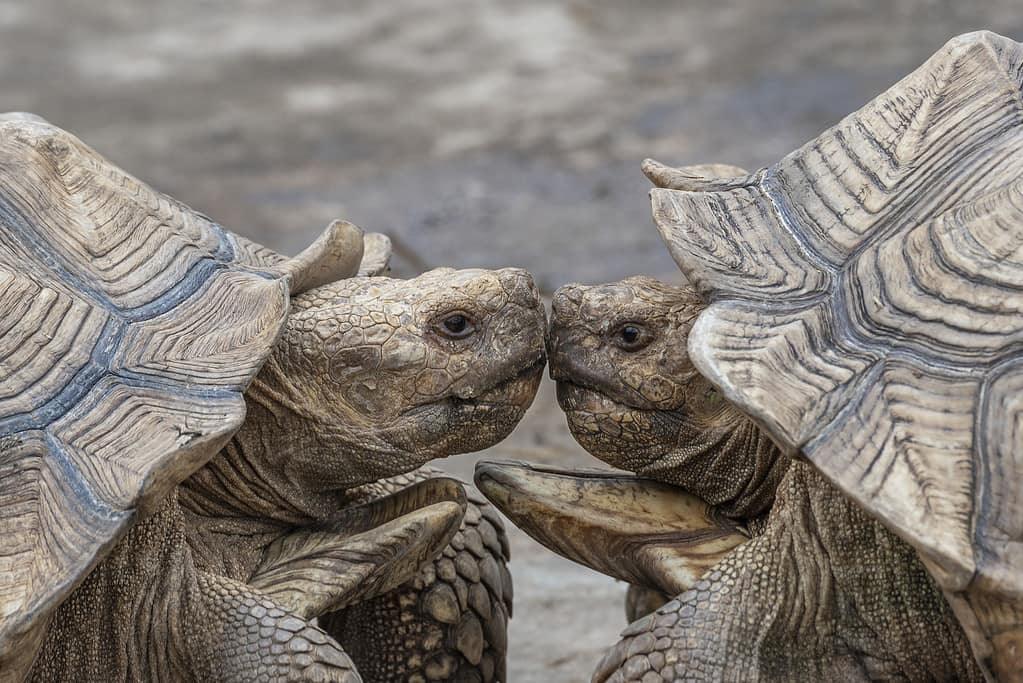
Male Sulcata tortoises are known for nibbling on the neck and limbs of females.
©LeeYiuTung/ via Getty Images
When Sulcata tortoises mate, it’s a noisy affair. Similar to mating cats, things can get intense. There’s plenty of groaning, grunting, and shell banging. Sometimes the curved marginals of older males are found lodged inside females.
Head-butting and head-banging can signify that a male tortoise is ready to mate. Male tortoises spend a significant portion of their active phase seeking a partner. Once they find a sexually mature female, the male will make his move.
Male Sulcata tortoises are known for nibbling on the neck and limbs of females. Males will also batter their shells into females to get their attention. If the female Sulcata is compliant, copulation can take place.
7. A Sulcata Tortoises Beak Can Overgrow
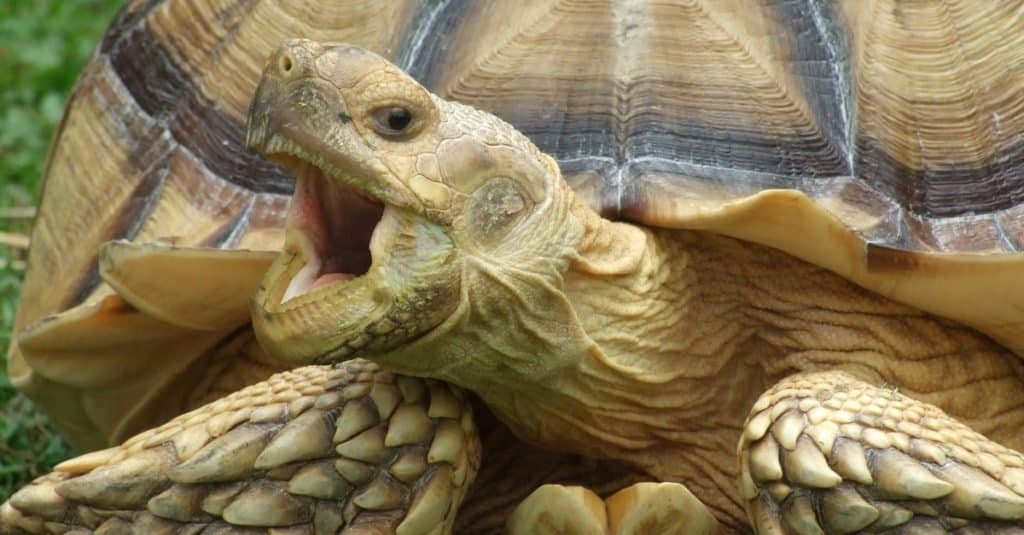
The sulcata tortoise has a strong and powerful beak.
©YapAhock/Shutterstock.com
Looking at a tortoise from the side, you’ll notice a hard, sharp overhang from its mouth. This area is the tortoise’s beak.
Sulcata tortoises don’t have any teeth. Instead, their jaw is covered with a horny layer forming a powerful, sharp beak.
Tortoises eat by using their beaks to shred the food. However, sometimes their beaks can become overgrown if they’re not getting the right nutrition.
An overgrown sulcata beak can also be caused by bone disease and trauma. Pet owners should immediately take their tortoise to a vet to have an overgrown beak evaluated.
8. Sulcata Tortoises Have 3 Fundamental Sensory Organs
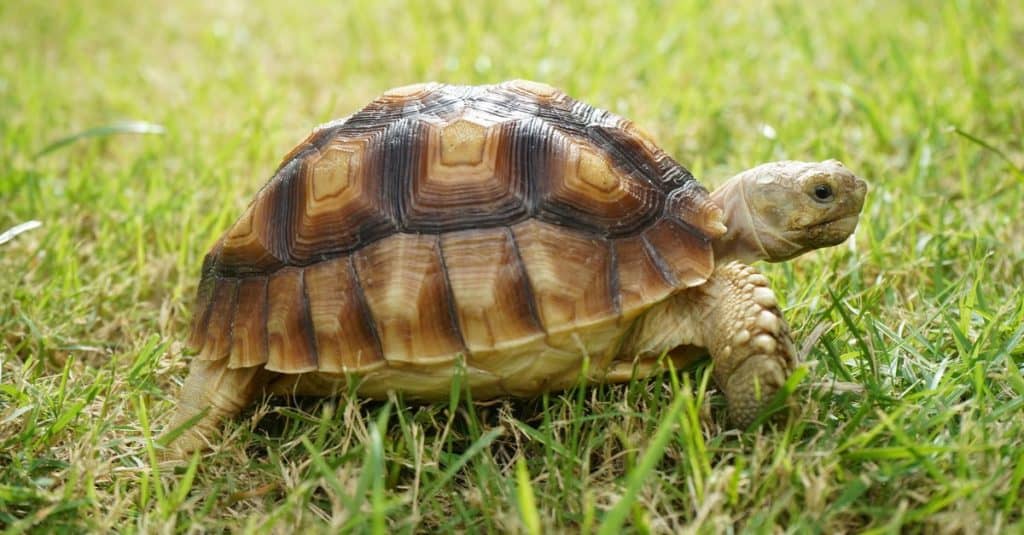
Sulcata tortoise walking on grass (Centrochelys sulcata)
©Sutthiphong Chandaeng/Shutterstock.com
Sight, taste, and smell are the 3 fundamental sensory organs for sulcata tortoises. They have a particularly keen sense of sight.
Taste and smell are also fundamental sensory organs since they aid the tortoise’s survival. Both taste and smell help the tortoise search for food, observe the presence of a sexual partner and notice the threat of danger. Scents also help the tortoises distinguish their territory to find the right place to live and build a nest.
While hunting for food, companionship, or shelter, a tortoise will continually gather data from odorous particles in the air. The information they collect from air particles lets them know how to live their lives.
9. Sulcatas Can Burrow Through Walls
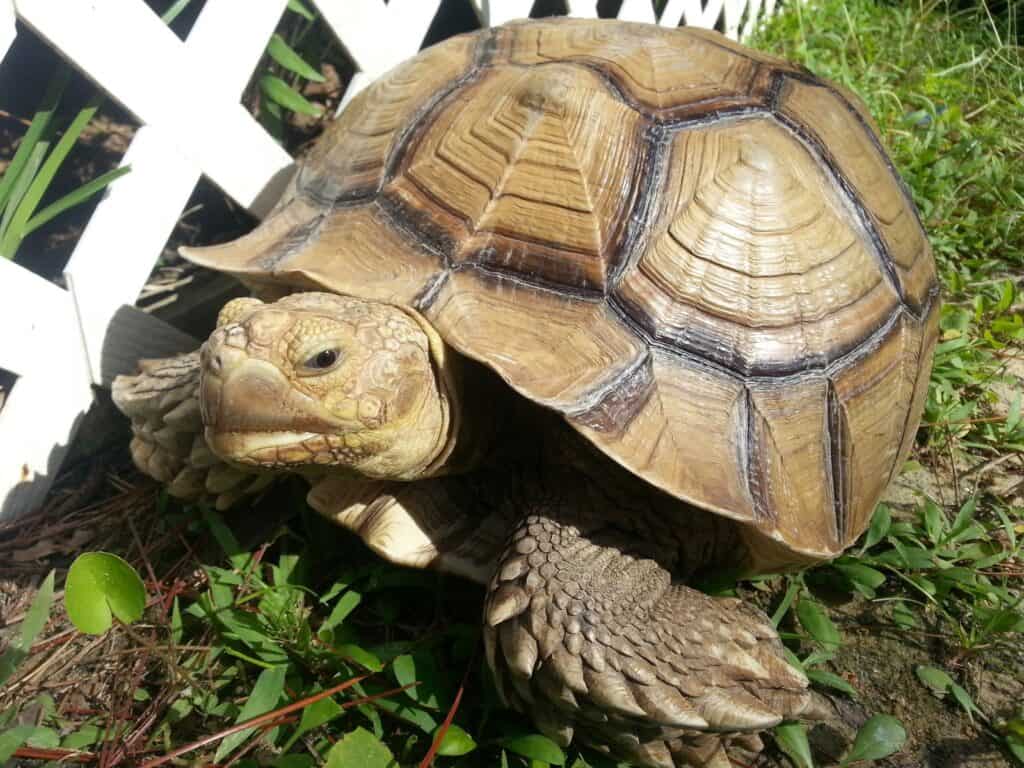
What starts off as an adorable baby tortoise, quickly grows into a giant tortoise that’s difficult to house.
©TinaO/Shutterstock.com
Next, on our list of incredible Sulcata tortoise facts, did you know these animals can burrow through walls? Sulcatas are popular pets, but they aren’t always the wisest choice.
What starts off as an adorable baby tortoise, quickly grows into a giant tortoise that’s difficult to house. Adults can dig burrows over 20 ft long and go through porches, walls, and housing foundations.
Unfortunately, these tortoises are too giant for most hobbyists. They’re not suitable pets for apartments and do best when they have access to outdoor housing.
Caring for a tortoise takes a lot of work. If you feed them too much protein, the tortoise’s shell can start to deform. Tortoises who don’t have the proper diet sometimes become victims of pyramiding. Pyramiding happens when their shell deforms, and the scutes start to pyramid.
10. Sulcata Tortoises Cry When Sick
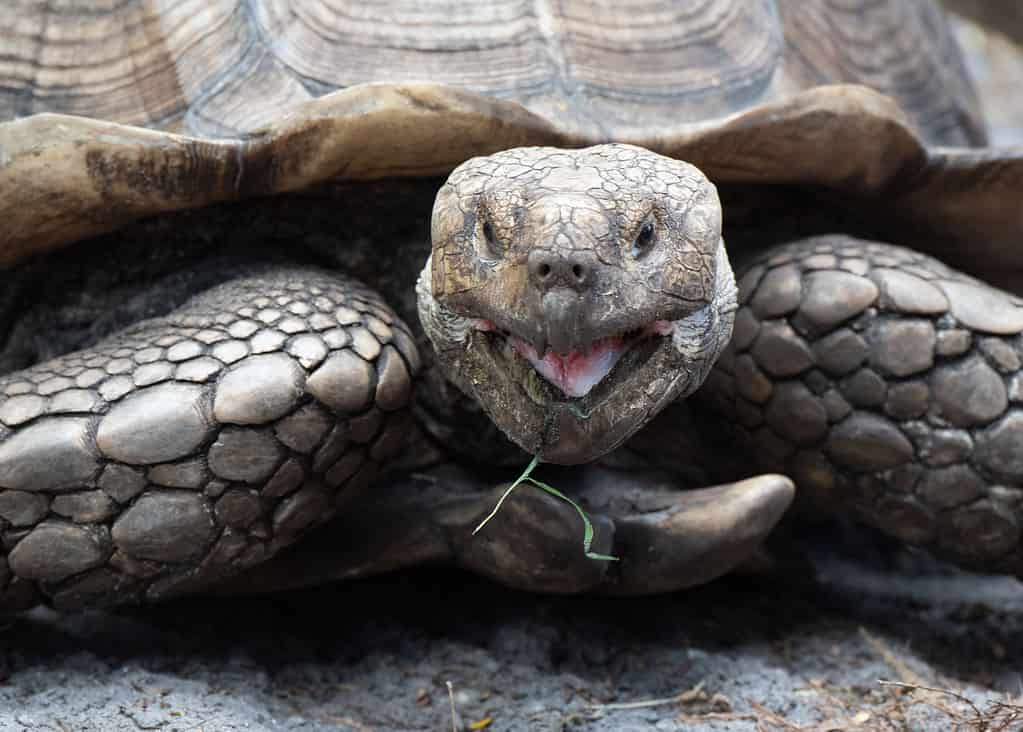
Sometimes their crying noises are similar to the sounds a small cat might make.
©Dossyl/ via Getty Images
Last, on our list of incredible Sulcata tortoise facts, these animals can cry when sick. Sulcata tortoises will make crying sounds if they have a respiratory infection. If there’s too much mucus, their airway becomes constricted. Sometimes their crying noises are similar to the sounds a small cat might make.
The tortoise may gently meow or simply have low-pitched squeals. Respiratory infections are just one of the complications pet owners can face.
The truth is that caring for giant tortoises takes a lot of time, money, and expertise. If you’re missing any part of the equation, it’ll be difficult for the tortoise to live a healthy life. The Spur Thighed Greek tortoise makes a much easier pet.
The photo featured at the top of this post is © Poez/Shutterstock.com
Thank you for reading! Have some feedback for us? Contact the AZ Animals editorial team.






